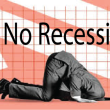May 14, 2012
by Liz Ann Sonders, Senior Vice President, Chief Investment Strategist, Charles Schwab & Co., Inc.
Key Points
- We believe the stock market's correction is likely to be less severe this year relative to 2010 or 2011.
- Be aware of the possible perils of following a "sell in May" trading strategy.
- For now, macro concerns—including Europe and the looming "fiscal cliff"—are trumping better micro news.
The stock market is in correction mode and investors are on edge. There are likely several reasons for the weakness, including what we pointed out in our early-April report on elevated optimistic sentiment. Since sentiment tends to work a contrarian magic on the market, we were anticipating a period of consolidation after the stellar six-month, 30% run off the early October 2011 low—and we're getting it.
Of course, we're also yet again dealing with the eurozone debt crisis, but also choppier economic indicators in the United States recently, a volatile election season and concerns about the so-called "fiscal cliff" heading into the end of this year. But one of the questions I've gotten most often recently has been about the seasonal phenomenon called "sell in May and go away," and whether the market's in store for another summer swoon like we've had the past two years.
Macro trumping micro
I'll start with "sell in May," but before I do, I want to address an important general observation. As we've noted many times recently in reports and media appearances; and as detailed in a terrific recent report by Wall Street research firm Wolfe Trahan, macro is trumping micro. One of the reasons for this is the decline in guidance investors are receiving from company managements.
In the past, guidance was often an anchor of reason in volatile times. Events like European elections or spiking eurozone sovereign bond yields might not have been such big market-moving events when we could rest on US companies' guidance as to the future. Add to that rapid-fire trading, shortened time horizons, greatly increased access to information, greatly increased speed of news' dissemination, and much more globalized economic and financial systems, and you have a recipe for increased volatility around macro events.
Sell in May?
Much is made every year of the "sell in May" phenomenon. Its basis is rooted in the fact that the best performance for the market has generally come in the November through April period, while the worst has come between May and October.
There is some truth to the adage. According to data compiled by Ned Davis Research (NDR), through the beginning of May this year the average performance for the period from May 1 through October 31 each year since 1950 was 1.2%. The average performance for the period from November 1 through April 30 each year since 1950 was 7.0%.
As compelling as those numbers may seem, there are many things to consider, especially if it's your inclination to develop a trading strategy around those seasonal patterns. First, the calendar months individually tend to fall into either the "hot" or "cold" columns for performance, as you can see in the table below. Three of the six months that fall into the "all out" period spanning from May through October are actually historically strong months, while three of the six months that fall into the "all in" period spanning from November through April are actually historically weak months.
Source: NDR, Inc. (Further distribution prohibited without prior permission. Copyright 2012 (c) Ned Davis Research, Inc. All rights reserved.), as of 1928-April 30, 2012.
As you can see, all of the seasons seem to be adequately represented in both columns. And what we know for a fact is that time horizons have become much shorter over the recent years, and the reaction function gets triggered more often. It's likely that many investors may find their patience tested when experiencing either a great month (or two) during the May-October "all out" period and/or a poor month (or two) during the November-April "all in" period. Of course, the seasonal trading strategy must consider transaction costs and tax implications.
Sector performance May-October
For investors who like to take a tactical approach to the seasonal tendencies, a sector bias strategy may be worth considering. Before I get to the details, let me remind our clients that we moved toward a more sector-neutral strategy back in early April when we became more cautious about the market in the short term. Presently the only outperform rating we have is on the information technology sector, while the only underperform rating we have is on the utilities sector.
As you can see in the table below, courtesy of The Leuthold Group, cyclical groups have tended to outperform during the market's traditionally strong November-April period, while defensive sectors have been the relative winners during the customarily weaker May-October period. In fact, the size and persistence of these effects have been impressive (at least since 1989, the span of the analysis).
S&P 500 Sector Seasonality
Source: The Leuthold Group, October, 1989-April, 2012. Defensive sectors: consumer staples, health care and utilities. Cyclical sectors: consumer discretionary, industrials and materials.
Buy in May in election years?
There's also the rub of this being an election year, during which sitting out the May through October period has historically not worked well. Using the Dow Jones Industrial Average because of its longer history, the market has been up 4.5% during election years in the May-October span versus 2.6% for all years (including election years). And for what it's worth, according to NDR, the market has bucked seasonal weakness even more when the incumbent president has won, with a median gain of 7.6% versus 0.5% when the incumbent president has lost.
NDR provides a clue as to why this is the case: A correction has occurred during the second quarter of election years, on average (sound familiar?). But the correction has tended to be concentrated in the second quarter, setting the stage for a summer rally.
2012's positive offsets to present weakness
I actually think the scenario noted above is more likely than not this year. Muscle memory has many investors fretting a repeat of 2011 and 2010, when economic weakness in the spring led to brutal corrections each year, to the tune of -19% and -16%, respectively. But there's a long list of positive offsets this year relative to the past two years:
- Inflation is coming down, especially among commodity prices.
- Credit growth is quite strong, especially for consumers.
- Housing has improved markedly.
- The US manufacturing sector is humming.
- NFIB's small business survey made recent upside breakout.
- Job growth is much better.
- Consumer confidence is improving.
- Private-sector leverage ratios are much improved (debt servicing costs are extremely low).
- Recovery in state/local government spending.
- The US economy somewhat decoupling from rest of world; at least Europe.
- US bank capital/health is much better than Europe's.
- The European Central Bank's Long-Term Refinancing Operations have reduced likelihood of global financial contagion.
- Germany appears more willing to accept higher inflation, opening the door to easier monetary policy for the eurozone.
- Valuations are quite cheap, especially on forward earnings.
- Investor sentiment has improved sharply with the correction to-date (meaning pessimism has kicked back in).
I don't think the present correction is over, but do believe it could be kept to within the normal 5-10% range. Since the current bull market began in March 2009, the S&P 500 has had 15 corrections of more than 5% that were preceded by at least a 5% rally (consistent with this year's pattern). The table below highlights their duration and ultimate percentage drop.
S&P 500 5% Corrections
Source: NDR, Inc. (Further distribution prohibited without prior permission. Copyright 2012 (c) Ned Davis Research, Inc. All rights reserved.), as of May 11, 2012.
Wall of worry being rebuilt
Tempering my short-term concern has been the aforementioned improvement in sentiment conditions. That said, I think there's likely a bit more pessimism needed to establish a short-term bottom for the market. As you can see, the well-watched NDR Crowd Sentiment Poll (CSP) has moved decisively lower, but not yet to the extreme pessimism zone:
Bye-Bye Optimism
Source: NDR, Inc. (Further distribution prohibited without prior permission. Copyright 2012 (c) Ned Davis Research, Inc. All rights reserved.), as May 8, 2012.
NDR noted in a recent report several key reasons to expect the correction to be within the normal 5-10% range:
- Initial reversals in CSP extremes are consistent with median declines of about 8% within six months.
- The first half of election years have shown median declines of just less than 10%.
- Once "pre-waterfall" highs have been exceeded, as occurred in February of this year, median market declines have ranged between -3% and -7% within six months.
Saving the worst for last
I think investors and the media may be underestimating the impact the coming "fiscal cliff" is having on market and business psychology. The fiscal cliff refers to the near-simultaneous January 2013 expiration of the Bush tax cuts, the payroll tax cuts, emergency unemployment benefits and the sequester (automatic spending cuts) established in last summer's debt-limit agreement.
The range of estimates for its ultimate impact are, unfortunately, quite wide. The lowest estimate I've seen comes from NDR, using Congressional Budget Office assumptions, with the impact at a relatively "low" 2.4% of US gross domestic product (GDP). Most estimates tend to cluster around 3.5% of GDP.
It's impossible to know what's right because different assumptions are being used. But the consensus is closing in on a worst-case scenario of about 4% of GDP. ISI recently put the numbers into three distinct buckets, each with about $200 billion of impact:
- Provisions likely to create a fiscal drag (approximately (≈) $221 billion or 1.4% of GDP):
- Cuts to discretionary spending (≈$84 billion)
- Tax increases on upper-income Americans included in the Affordable Care Act (≈$21 billion)
- Payroll tax cut (≈$116 billion)
- Bush tax cuts (≈$200 billion or 1.3% of GDP, although likely impact would be spread over several years)
- Items unlikely to be allowed to take affect and thus aren't likely to create a fiscal drag (≈$179 billion or 1.1% of GDP):
- Huge increase in number of Americans paying the alternative minimum tax (≈$94 billion)
- Sequester cuts (~$85 billion)
There are three additional items that don't fall neatly into ISI's three buckets, including tax extenders, extended unemployment insurance benefits and the "doc fix," which would together total about $75 billion. These items are not expected to create a significant fiscal drag.
I actually think this is having a larger impact on psychology than many believe, especially on the confidence of corporate leaders and their ability to plan (and guide Wall Street's analysts) for the future.
Muscle memory may fail us this year
In sum, there's much to fret about, and volatility is likely to remain elevated until this correction has run its course. But a lot has changed in the past two years—much for the better—particularly for domestically oriented US companies. There's at least a little bit of decoupling underway, certainly between the United States and Europe, and that's likely to assist in keeping the correction from mirroring the ones in 2010 and 2011.
Important Disclosures
The information provided here is for general informational purposes only and should not be considered an individualized recommendation or personalized investment advice. The investment strategies mentioned here may not be suitable for everyone. Each investor needs to review an investment strategy for his or her own particular situation before making any investment decision.All expressions of opinion are subject to change without notice in reaction to shifting market conditions. Data contained herein from third party providers is obtained from what are considered reliable sources. However, its accuracy, completeness or reliability cannot be guaranteed.Examples provided are for illustrative purposes only and not intended to be reflective of results you can expect to achieve.











